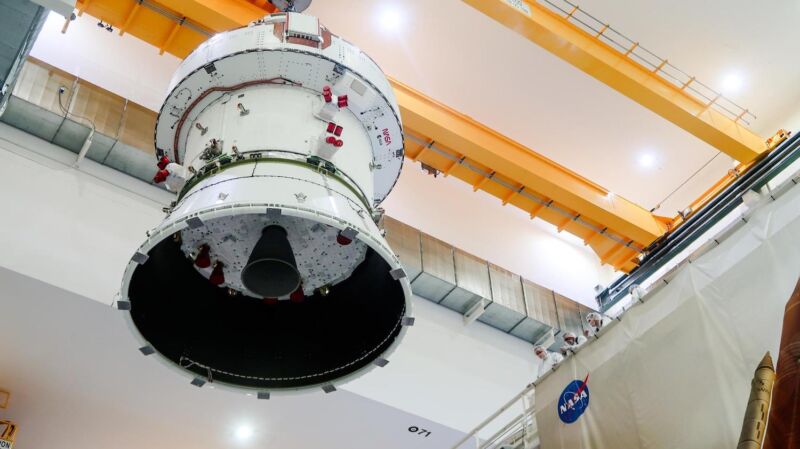Enlarge / The Orion spacecraft for the Artemis II mission, comprising its crew and service modules, was lifted into a vacuum test chamber at NASA’s Kennedy Space Center in Florida on April 4, 2024. (credit: NASA/Amanda Stevenson)
NASA would like to start stacking the Space Launch System rocket for the Artemis II mission—the first human flight around the Moon since 1972—sometime next month, but the agency’s exploration chief says the milestone could be delayed as engineers continue studying the readiness of the Orion spacecraft’s heat shield.
The heat shield, already installed at the base of the Orion spacecraft, will take the brunt of the heating when the capsule blazes through Earth’s atmosphere at the end of the 10-day mission. On the Artemis I test flight in late 2022, NASA sent an Orion spacecraft to the Moon and back without a crew aboard. The only significant blemish on the test flight was a finding that charred chunks of the heat shield unexpectedly stripped away from the capsule during reentry as temperatures increased to nearly 5,000° Fahrenheit (2,760° Celsius).
The spacecraft safely splashed down, and if any astronauts had been aboard, they would have been fine. However, the inspections of the recovered spacecraft showed divots of heat shield material were missing. The heat shield material, called Avcoat, is designed to erode away in a controlled manner during reentry. Instead, fragments fell off the heat shield that left cavities resembling potholes.
Read 15 remaining paragraphs | Comments




